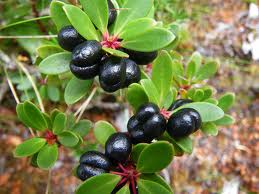Offer
Provide additional details about the offer you're running.

The Tasmanian Pepperberry or Tasmannia lanceolota is a native shrub that thrives on the slopes and gullies of cool, temperate forested areas. It can be found in the highlands of Victoria, NSW and all across Tasmania at altitudes of 300-1400m. When colonial botanist Robert Brown named the plant in 1804 it was the first time the name “Tasmania” had been used. The next occasion was on a map in 1808.
Side Note:
By the 1820’s the name Tasmania was in common use however, it was not until 1856 that the state was officially renamed Tasmania. This change was welcomed by most to help counter the poor reputation of Van Diemen’s Land.
Brown reported the pepperberry was “highly aromatic but with and exceedingly bitter and pungent taste”. Having tasted the berry myself I would have to disagree. The first thing I noticed was the fiery pepper taste which lasts a good 2-3 minutes, then tappers of quickly to leave a fresh mild pepper taste. I tried the berry fresh off the plant, whereas Brown may have been describing the dried pepper or even the leaves which are also edible. They can be used fresh as an ingredient or garnish or dried, milled and used as a spice in soups, stews, flour mixes and condiments.
A single tree at five years old should sustainably produce at least 3kg of fresh pepper leaf or 1.5kg of fresh berries per year. Leaves of the mountain pepper plant are best harvested between February and when they begin flowering in about late September. Berries are generally ready for harvest from March to May.
The plant has very high antibacterial, anti-fungal and antioxidant properties with the leaves being highest in antioxidant levels, 3 times as concentrated as blueberries. The strong antimicrobial activity of the leaves suppresses food spoilage organisms and thus can be used for preserving foods. Mountain pepper leaf contains high concentrations of Vitamin E, zinc, calcium, magnesium, iron and lutein. It is also sometimes used to assist in the slow absorption of glucose from the stomach, promoting the stabilisation of blood sugar levels.
The plant has a long history of medicinal use in traditional medicine and Aboriginal culture. It can be used as an anti-inflammatory and as an aid for arthritis. Aboriginal people suffering from sore gums and toothaches would crush the berries in water to make a paste and apply the paste to the infected area. It has also been used to treat skin disorders, venereal diseases, colic and stomach aches. Despite its medicinal properties the berry was likely most commonly used in Aboriginal cuisine as a food flavouring.
The production of pepperberry is still a relatively small and developing market. The market demand is currently met by a combination of ‘wild harvest’ (up to 90% with licence from State Forests) and from cultivated plantations. 60% of the berry harvest is exported to place like Germany France and Switzerland. It also exported to Japan to flavour Wasabi.
Most visitors to Tasmania will be able to see pepperberry if they go to Cradle Mountain. Take the Pencil Pine walk and look for the distinctive red stems and aromatic dark green leaves on a shrub only 1-4 metres tall. Another option is to visit the pepperberry and garlic farm at Lorrina, just south of Cradle Mountain and take home some one of their amazing & delicious pepperberry products.